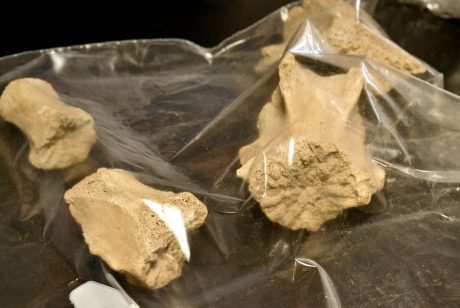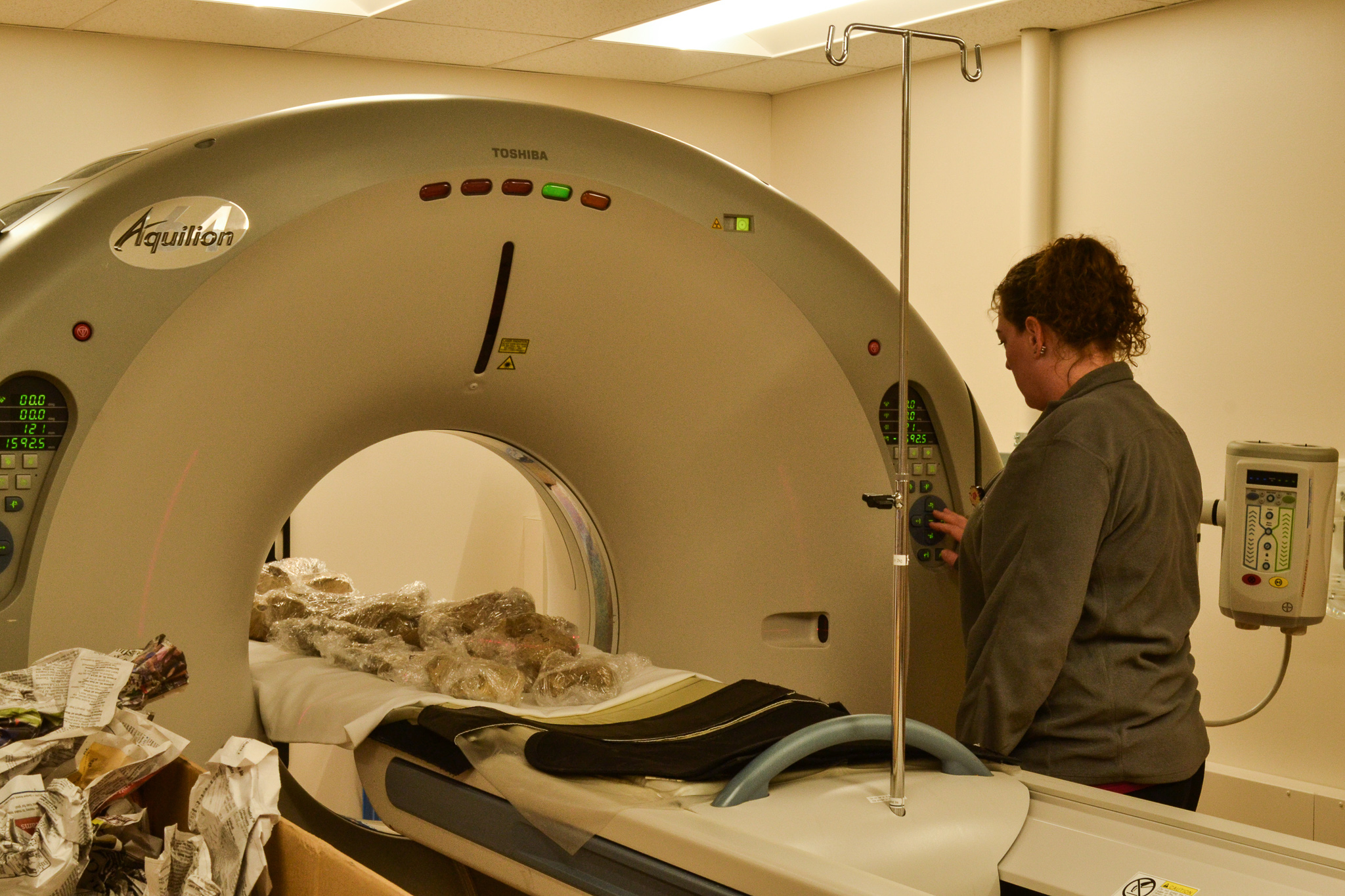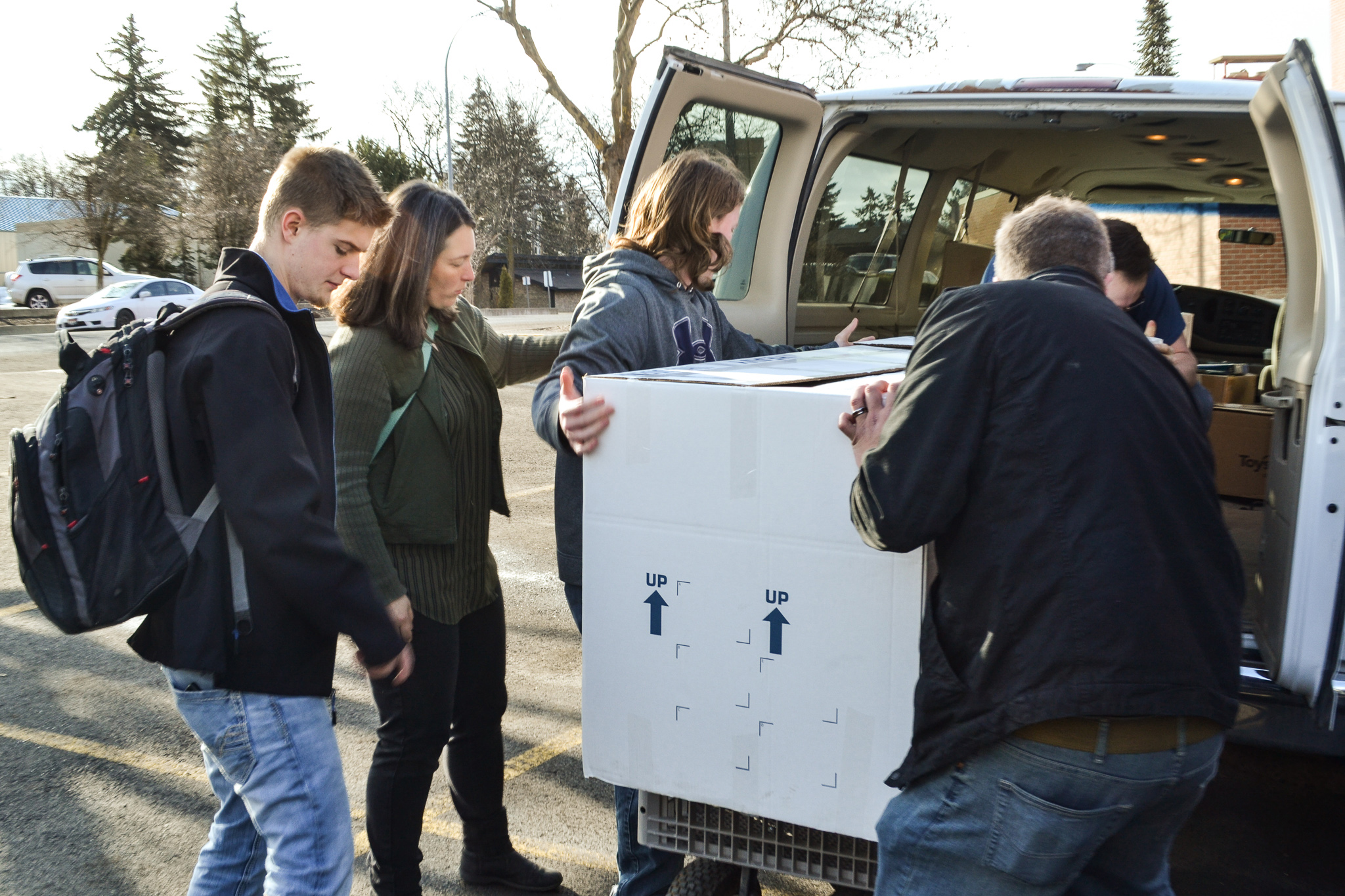A large box is carried out of a van and into a wagon, which is then pulled through the physician’s entrance of Gritman Medical Center to a room with a large CT scanner. Inside the box are several pieces of cellophane wrapped mammoth bones.
Dr. Renee Love, the professor heading the geology portion of the project, said the bones were found in a hot springs deposit in Soda Springs, Idaho, in 1966 by a University of Idaho professor.
“It went around the department for a while and nobody was really working on it,” Love said. “Eventually it just got in the way, so the University of Idaho gave it to the Palouse Discovery Science Center. They had it for about ten years and then they decided that they were going to do a renovation and the mammoth was big and, in the way, so they gave it back.”
Love’s class has 16 undergraduate research students who will each be doing their own research project with the mammoth bones. Each student will have their own research question with the overlying question of ‘what was the cause of death?’ she said.

Brianna Finnegan | Argonaut
“I am involved in the analysis of what composes the bone at this point,” said Shilah Loosle, one of Love’s undergraduate students. “Right now, my questions are more evolutionary generally. The proteins can actually tell us quite a bit about how the composition changes over time.”
Through work they’ve done throughout the semester, Love and her undergraduate research students have been able to determine that the mammoth was young, at approximately six to 10 years old when it died.
Love’s students are also trying to decipher what type of mammoth it is. According to Love there are three types of mammoths: Columbian, wooly and Jeffersonian.
“I’m working on taxonomy,” Jon Erdman, one of the undergraduate students, said. “I look at the pieces that determine if it’s a Columbian or a woolly. Given the time frame, those are the two mammoths that it could potentially be.”
“One of the primary characteristics to identify a mammoth is actually its teeth,” Erdman continued. “So, I’ve been going through and measuring the characteristics of the tooth to determine whether or not it’s a Columbian or woolly.”
Love’s class is also working with a Virtual Technology Design class in order to get a better view of the bones. Taught by Zeth Dubois, the VTD students are creating a visual virtual database. For the VTD students, this project gives them the opportunity to experience collaborating with a real client.
“When I signed up for the class, I had no idea what we were doing, said Layne Harris, a VTD student. “We got an email from Zeth saying ‘Hey. We’ve got a mammoth we’re working on. This is our client, Dr. Love, and we are building a program for our client.’”


Harris said the project has helped him with problem solving in a different way. Harris explained that since he runs his own business he already works with clients often, but working with a mammoth has a whole new set of issues he has to address.
Between scans, students from both disciplines talked excitedly amongst each other about the project. Each side explained their difficulties, and their views of how to continue with the project. Dubois hopes that projects like this — with this kind of collaboration — can continue.
“We hope to run this course every semester,” Dubois said. “What that means is that we’re presenting our studio as a service and we need clients for next semester. If there’s any other programs or colleges trying to think of ways to introduce virtual technology as a tool, they can approach us.”
Brianna Finnegan can be reached at [email protected] or on Twitter @BriannaFinnega8
